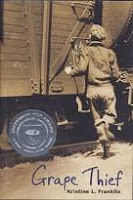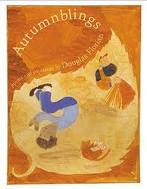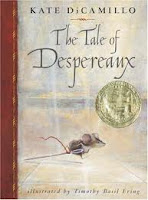
Going, Kelly. 2003. FAT KID RULES THE WORLD. New York: G.P. Putnam’s Sons. ISBN 0399239901 [Suggested Grade Levels 8 and up]
SUMMARY and ANALYSIS
Seventeen-year-old Troy, depressed, suicidal, and weighing nearly three hundred pounds, gets a new perspective on life when he is saved and befriended by Curt, a legendary local punk rock musician.
In this gritty and intense novel, Going tells the story of Troy Billings, a suicidal teen who remains an eternal fish out of water. "First, the train is coming, its single headlight illuminating the dark tracks. I hear its deep rumble and take the fateful step forward. I want to picture myself flying dramatically through the air but realize I wouldn't have the muscle power to launch my body. Instead, I would plummet straight down. Maybe I wouldn't even get my other leg off the platform--my weight would pull me down like an anchor. That's how I see it." Told in first person, Troy is a winner narrator, and despite his problems—his struggle with weight, his sense of isolation from his family, and the daily torment he faces at school, he offers his story with candor and humor. The relationship between Troy and Curt becomes symbiotic as Curt tries to offer Troy a place in the world by recruiting him as the drummer in his new band. Like Troy, Curt, too, is the product of a dysfunctional family, and he has plenty of problems of his own, including a reliance on drugs. The secondary characters are effectively painted so they are not merely diversions from the story; their growth is recognizable and important. Going’s debut novel is often funny, sometimes heartbreaking, and always poignant.
CONNECTIONS
Teens could research the history of punk rock music and share ways this genre has influenced today’s music. As an extension activity, they could select a favorite song to share with others, making sure to include lyrics, which could be followed by a discussion.
Teens could read Chris Crutcher’s STAYING FAT FOR SARAH BYRNES to compare how the main characters in each work deal with the struggles of obesity. After reading, they could discuss the two works focusing on themes of friendship, tolerance, and loss.
RELATED BOOKS
If you like FAT KID RULES THE WORLD, try:
Murray, Jaye. BOTTLED UP. ISBN 0803728972
Nelson, Blake. THE NEW RULES OF HIGH SCHOOL. ISBN 0670036447
Oates, Joyce Carol. BIG MOUTH AND UGLY GIRL. ISBN 0066237580
By Rose Brock












